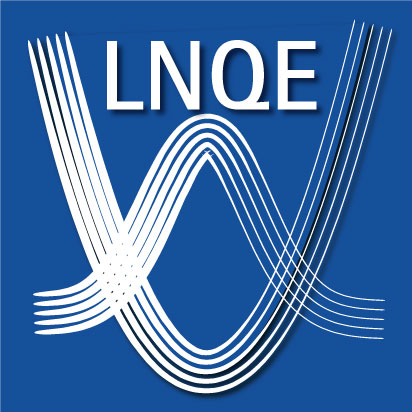Electrical and Optical Switching of Gas Transport through Surface MOF Layers
| Leitung: | J. Caro |
| Team: | A. Knebel |
| Jahr: | 2016 |
Metal-organic frameworks (MOFs) and surface anchored MOFs (SURMOFs) are a class of crystalline materials consisting of inorganic metal nodes interconnected by organic linker molecules. These materials demonstrate exceptionally high surface areas and adsorption abilities, optimally fitted for gas separation and purficiation applications. They find use in membrane technology, for example as neat MOF membranes or mixed matrix membranes (MMMs) [1]. Through their standing as organic-inorganic hybrid materials, MOFs were recently found to be smart materials, when, for example, adding stimuli responsive moieties into the framework. Demonstration of tailor-made functionality in a remote-controllable membrane with light switchable azobenzene (AZB) in the backbone of MOF crystals was recently published [2]. However, MOFs stay behind their potential gas separation potential for the same reason: flexibility within these hybrid frameworks prevents molecular sieving. They are called “soft porous crystals” [3] due to thermally induced lattice flexibility, called breathing, that is particularly conducted through shear-deformations, soft-modes and linker rotations, depending on the type of MOF [4]. The primary aim of the PhD work is to exploit this framework flexibility with external stimuli in membrane layers and MMMs. The main project is the utilization of static and alternating electric fields [5] as well as the irradiation with light of specific wavelength [6]. The production of switchable smart membranes for separation and purification purpose is important to surpass today’s standards in membrane technology.
References
[1] A. Knebel, S. Friebe, N.C. Bigall, M. Benzaqui, C. Serre, J. Caro, Comparative Study of MIL-96(Al) as Continuous Metal-Organic Frameworks Layer and Mixed-Matrix Membrane, ACS appl. mater. interfaces 8 (2016) 7536–7544.
[2] A. Knebel, Z. Wang, S. Grosjean, D. Wagner, S. Bräse, C. Wöll, J. Caro, L. Heinke, Tunable Molecular Separation by Nanoporous Membranes, Nat. Commun. (2016), 7, 13872.
[3] S. Horike, S. Shimomura, S. Kitagawa, Soft porous crystals, Nat. Chem. 1 (2009) 695–704.
[4] M.R. Ryder, B. Civalleri, T.D. Bennett, S. Henke, S. Rudic, G. Cinque, F. Fernandez-Alonso, J.-C. Tan, Identifying the role of terahertz vibrations in metal-organic frameworks: from gate-opening phenomenon to shear-driven structural destabilization, Phys. Rev. Lett. (2014), 1132, 15502.
[5] A. Knebel, B. Geppert, K. Volgmann, J. Twiefel, P. Heitjans, J. Caro, Defibrillation of soft porous metal-organic framworks with electric fields, Science (2017), 358, 347-351
[6] A. Knebel, L. Sundermann, A. Mohmeyer, S. Friebe, P. Behrens, J. Caro, Azobenzene Guest Molecules as Light-Switchable CO2 Valves in an Ultrathin UiO-67 Membrane, Chem. Mater. (2017), 29, 3111-3117
Acknowledgement
This work is funded by and part of the DFG priority programm “Coordination Networks: Building Blocks for Functional Systems” (COORNETs) SPP 1928.






